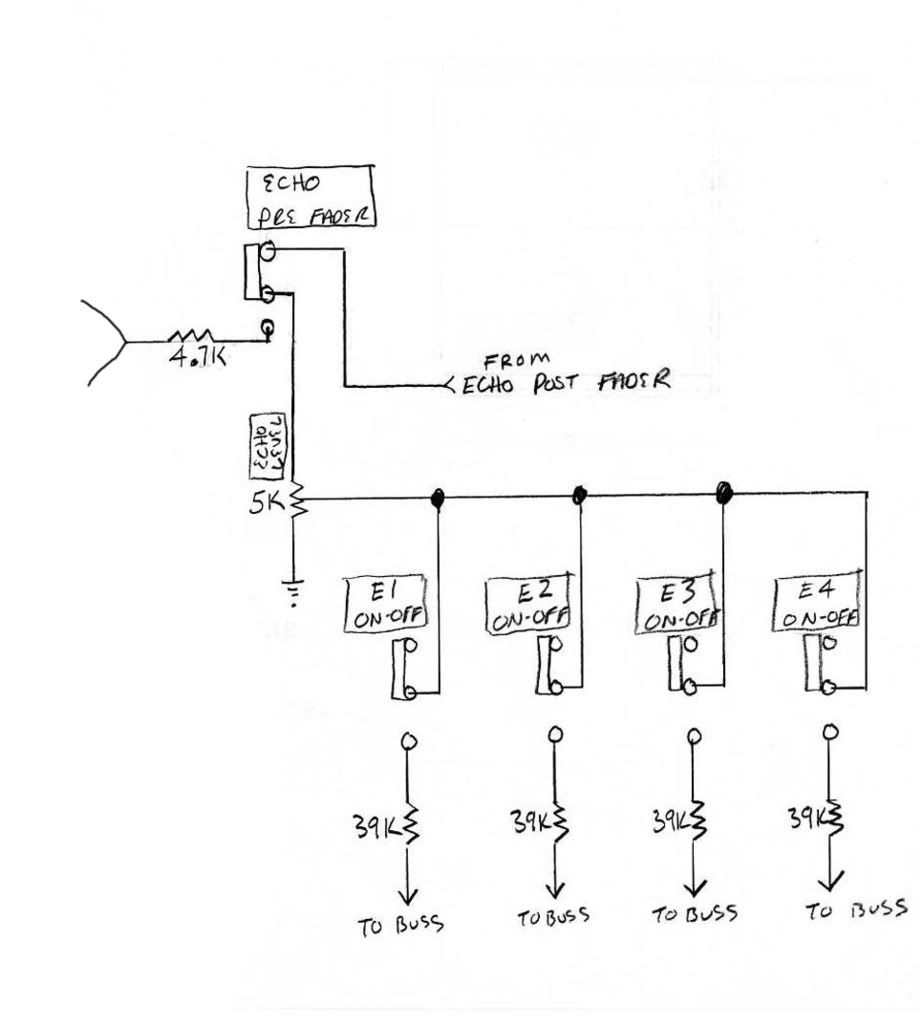Hey all,
I have a newbie "first thread" math question involving parallel resistance calculations.
I am trying to understand the way my input modules in my desk are designed, and the heaviest potential load the opamps could be driving at different nodes.
Just looking to make sure I've figured this correctly.
Here is a quick rough sketch of part of the input channel circuit.

With Pre Fade selected and pot at full 5K value, this is what I came up with:
1 Echo's engaged, node=48.7K
2 Echo's engaged, node=29.2K
3 Echo's engaged, node=22.7K
All 4 Echo's engaged, node=19.5K
So, how did I do?
Much thanks in advance, Jeff
I have a newbie "first thread" math question involving parallel resistance calculations.
I am trying to understand the way my input modules in my desk are designed, and the heaviest potential load the opamps could be driving at different nodes.
Just looking to make sure I've figured this correctly.
Here is a quick rough sketch of part of the input channel circuit.

With Pre Fade selected and pot at full 5K value, this is what I came up with:
1 Echo's engaged, node=48.7K
2 Echo's engaged, node=29.2K
3 Echo's engaged, node=22.7K
All 4 Echo's engaged, node=19.5K
So, how did I do?
Much thanks in advance, Jeff



